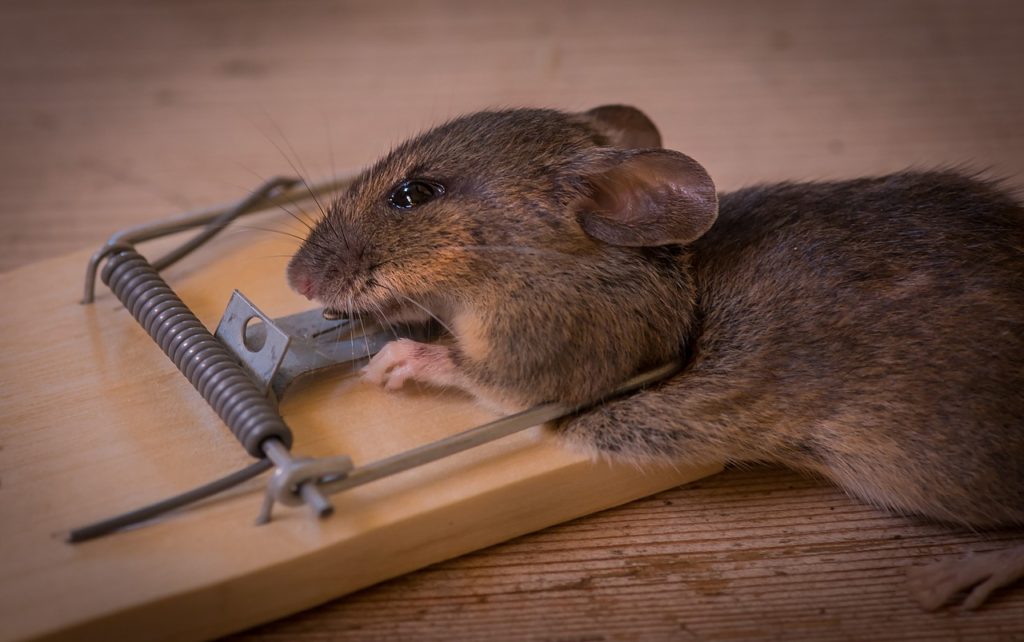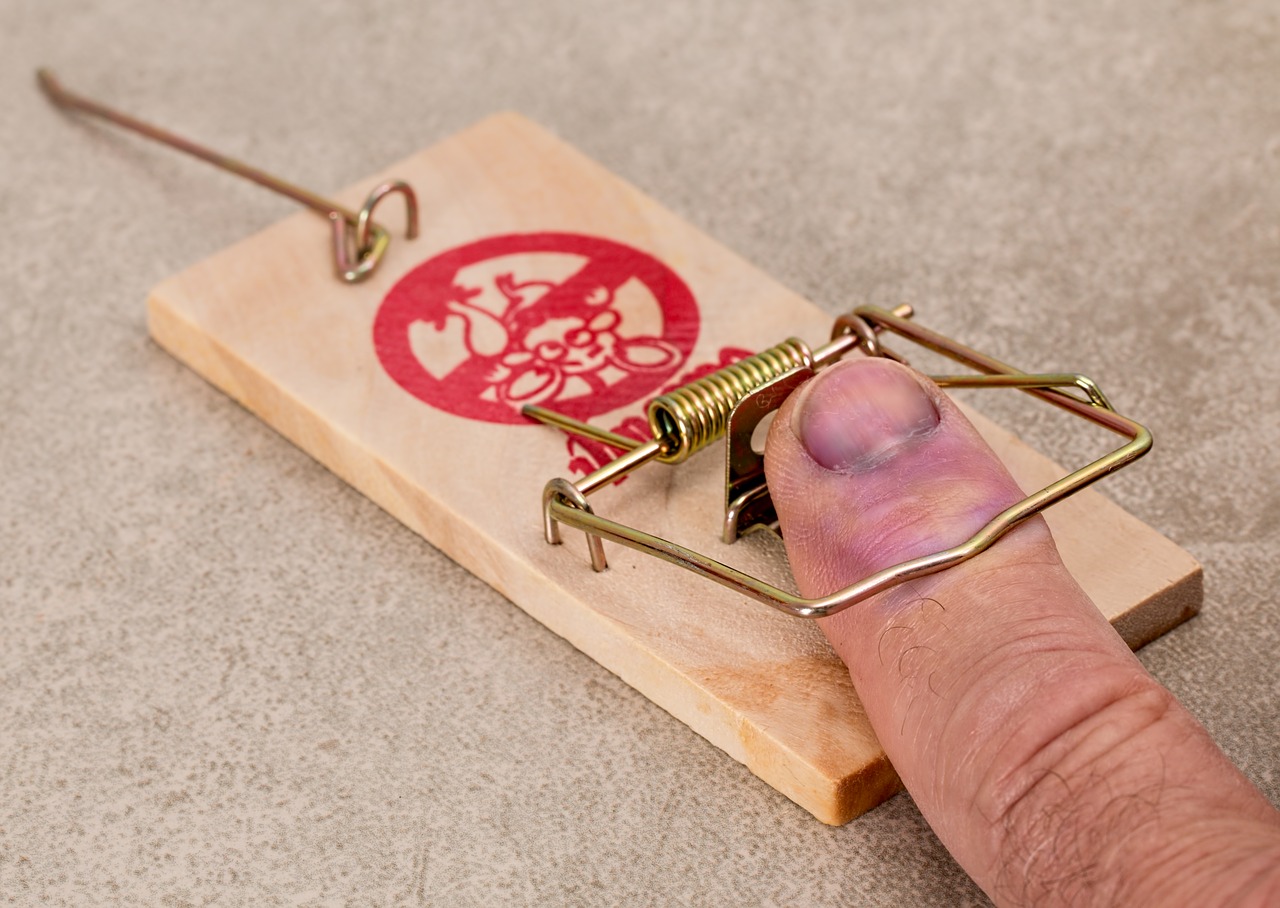A mice infestation can be one of the most frustrating things you can experience in your home. Your traps don’t seem to work and the mice seem intelligent enough to avoid them. You can’t do anything about the intelligence of the mice, but you can do something with your trapping techniques.
You may have a persistent mice problem because your techniques are not effective. Here are the most common mouse trap mistakes.
1. Holding the trap and bait with your bare hands
A mouse trap doesn’t give guaranteed results. In fact, you can set up a mouse trap that ends up not catching any mice at all. One of the many reasons this happens is that you are ruining your bait.
Mice have a very strong sense of smell. They can actually smell your scent on the mouse trap and the bait itself if you handle these things with your bare hands. When handling the mouse trap and the bait, make sure to use gloves, so you don’t put your scent on it.
2. Using the wrong bait
We have all seen it in cartoons before – mouse traps with cheese baits. These are actually not as effective as the cartoons make us believe, and there is one reason for this ineffectiveness. Different mice species have different dietary preferences, and some species don’t even like cheese.
If the mice in your home happen to be mice species that don’t like cheese, your mouse trap and bait will be left untouched. But there’s no need to worry. There is a more effective bait you can use – peanut butter. Mice are attracted to peanut butter because of its pervasive scent and high fat content.
3. Using too much bait
Bait is indeed a tricky thing when it comes to mouse traps. You don’t just have to choose the right bait. You also have to use the right amount. If you use too little of the bait, you may not be able to attract the rodents into your trap. And if you use too much bait, the rodents may take your bait without even triggering the trap.
You should use just enough bait to entice the rodents and not enough to prevent the trap’s mechanism to work.
4. Placing the trap in the wrong spots
Remember that mice are sneaky animals. They don’t like to be seen in the open and prefer to stay in the shadows. You should remember this fact when placing your mouse trap.
One of the most common mouse trap mistakes is not putting the mouse trap in the right places. Think like a mouse and imagine where you would crawl so you don’t get caught. The spots you will think of are the corners and edges of the walls, holes, and under furniture. Place your trap in these spots for optimal results.

5. Expecting instant results
Sure, you can use the most effective mouse trap techniques out there, but this doesn’t mean you can expect instant results. In fact, it may take a while for you to capture even just one mouse.
Mice are very cautious. They don’t trust new objects easily. So, when they suddenly see this peculiar object under the furniture, they are likely to avoid it, even if there is an appetizing bait attached to it. Have some patience. Don’t disturb the trap and let the pests get used to its presence. Once the pests get too familiar with the trap, they may finally trust it and end up getting caught.
6. Not checking your trap often enough
Yes, homeowners have the tendency to expect fast results, so they check and disturb their mouse trap too frequently. But the opposite can also happen. They can also expect slow results, so they leave the trap unsupervised for too long.
Remember that your trap’s mechanism can trigger and still don’t capture a mouse. If this happens and you don’t notice, you are basically leaving a closed trap that will never have an opportunity to capture a mouse again. You are wasting precious time.
Check your trap from time to time, to make sure that it is actually in a position to capture a mouse.
7. Not using enough traps around your home
Many homeowners also think that they can just place mouse traps all over their homes and their mice problems will be over in no time. They couldn’t be more wrong. What they fail to account for is the number of mice in their homes.
A few traps will not be able to get rid of a severe mice problem. It’s recommended to use about 3 traps for every mouse in your home. For example, if you think you have about 5 rodents lurking in your basement, you should place 15 traps there for the traps to be effective.

8. Using the wrong kind of trap
You may also be using the wrong kind of trap. Before even thinking about trapping rodents, you have to confirm first whether you are dealing with mice, rats, or something entirely different. Your trapping techniques will be ineffective if you are dealing with pests that are different than what you have initially thought.
Mouse traps are ineffective against rats, because the traps are too small and weak to restrain or kill rats. Having a trapped rat that is still alive can also prove to be a serious moral dilemma. Rat traps are ineffective against mice as well, because the traps are too big and easily dodged.
Avoid these mouse trap mistakes to finally solve your mice problem
There are a lot of mouse trap mistakes out there. And perhaps the most common among them all is the perception that mouse traps are an instant solution to mice problems. They are not.
Mouse traps should be strategically used to be effective. You have to handle them with gloves so you don’t leave your scent. You have to use the right amount and kind of bait. And you have to place them on the right spots to maximize their effectiveness.
Make the most of your mouse traps and solve your mice problems by avoiding these mouse trap mistakes.

